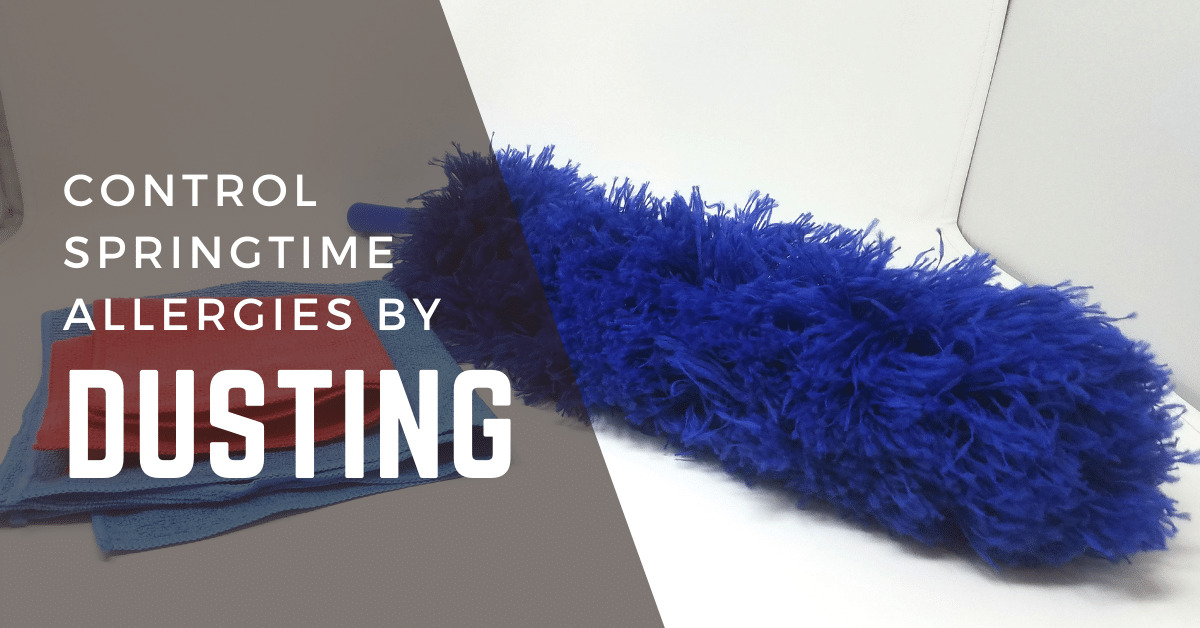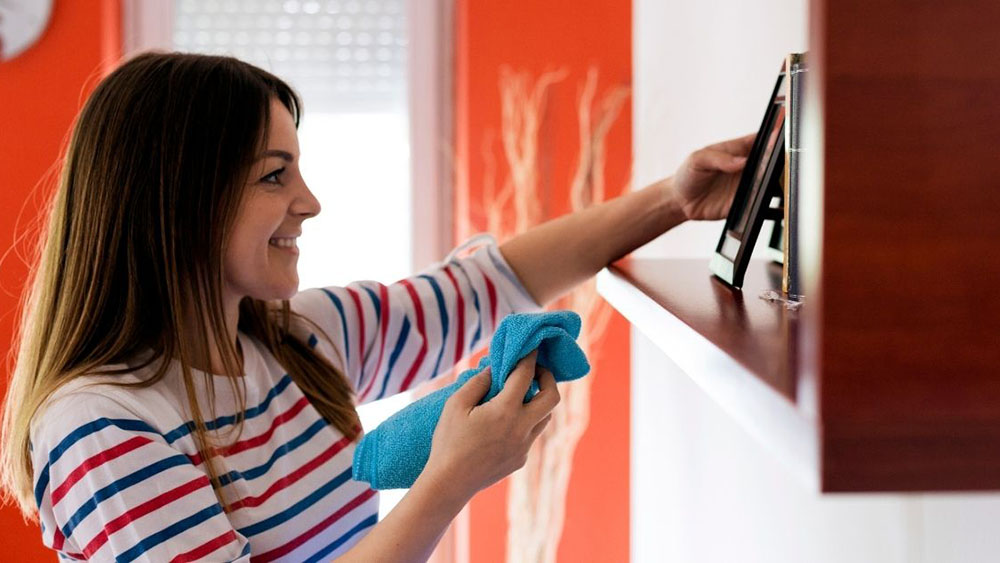
Dusting not only makes your home look nice, it can remove potential allergens from inside your home that could be making you sick.
Dust to Combat Springtime Allergies
Allergens run wild during the spring and this is due to trees, grasses and weeds releasing tiny grains called “pollen” which wreak havoc on your immune system when inhaled. Pollen can cause sneezing, itchy, watery eyes, runny noses and other symptoms. And pollen is not just outdoors; it can make up part of the dust that collects on your home’s surfaces.
Dust is another allergen and the dust inside your home could be made up of pet hair, dust mites, mold and pollen. Surprisingly, allergies could flare up AFTER dusting, because dust particles get stirred up and moved around during cleaning. To prevent this, wear a mask while dusting and use a tool like a microfiber duster that captures and traps dust in its fibers. Our flexible microfiber dusting wand, available in a 4 pack or 12 pack, gives you the ability to reach window blinds, ceiling fans, and light fixtures. It also bends to get behind bookcases and cabinets and in-between pieces of furniture.
You can also wet a microfiber cloth to collect dust in the towel. The special fibers of SpongeOutlet’s microfiber towels and dusters help attract dust and dirt so it’s removed from the surface and not just swept backup into the air.
 How to Dust the Right Way
How to Dust the Right Way
Always dust top to bottom and back to front. Be sure to get behind items and to clean underneath them as well. Appliances such as stoves and refrigerators are often overlooked when it comes to dusting, but food crumbs and dust can accumulate here too. Use a flat vacuum attachment or crevice cleaning attachment to get underneath appliances.
Here are some places to be sure to hit when dusting:
- ceiling corners
- walls
- behind furniture
- tops of furniture, shelving
- underneath appliances
- ceiling fans
- light fixtures
- blinds and drapes
- vents in ceilings and floors.
Finish Off by Vacuuming or Mopping
No matter how perfect you clean, dust will always settle back down and make its way to your flooring. Finish your dusting routine by either vacuuming or mopping your floor to gather any remaining dust particles.
Dusting on a regular basis will improve your indoor air quality and make your home look neater.
How often do you dust? Do you focus on one room at a time, or do you try to hit the whole house at one time?

 How to Dust the Right Way
How to Dust the Right Way